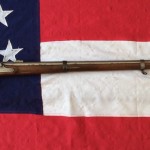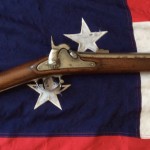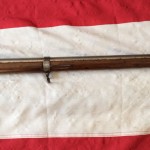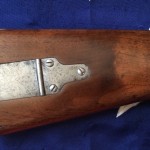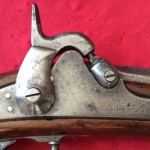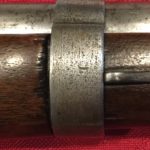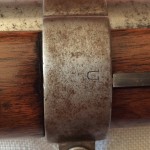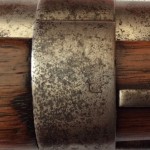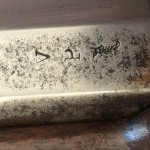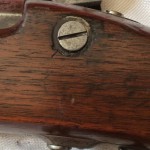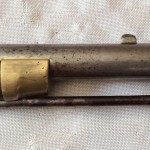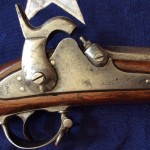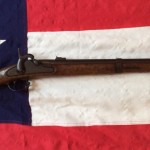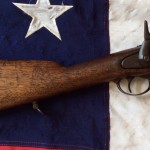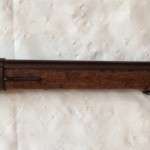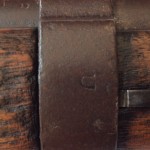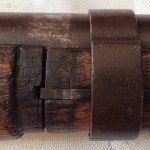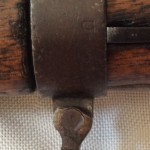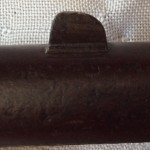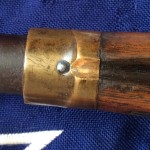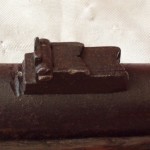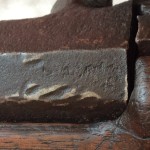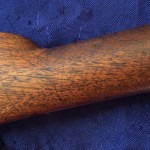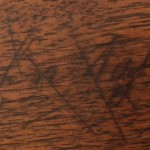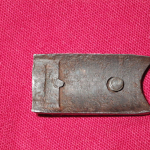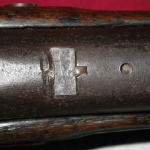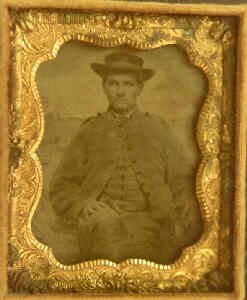- 1862 Richmond Rifle Musket, High Hump
- Richmond High Hump, Shoulder Stock
- Richmond Rifle Musket, Forward Stock
- 1862 Richmond Rifle Musket, Left Side
- Richmond Rifle Musket, Patch Box
- 1862 Richmond High Hump, Lock Plate
- Richmond Rifle Musket, Bottom Barrel Band
- Richmond Rifle Musket, Barrel Band & Sling
- Richmond Rifle Musket, Forward Barrel Band
- Richmond Rifle Musket, Proofs
- 1862 Richmond Rifle Musket Cartouche
- Richmond Rifle Musket, Front Sight
- 1862 Richmond High Hump, Lock Plate Cocked
September of 1861 the Confederate Government made arrangements with the state of Virginia to take control of the armory in Richmond Virginia. It was understood that most if not all guns made at the armory would go to Lee’s Army of Northern Virginia.
The Richmond Armory manufactured about 40,000 musket rifles, carbines, and short rifles. They also repaired thousands of battlefield pickups and guns captured from the enemy.
That brings me to the next weapon in my Civil War Arsenal, an 1862 C.S. Richmond Virginia High Hump Rifled Musket. Made with Harpers Ferry wood, displaying a patch box. This may be one of the finest examples of a Richmond High Hump you will ever see.
This rifle musket was assembled between January & April 1862 since none of the parts except for the lock plate and the ram rod are Southern made. In March/April of 1862 the Richmond Armory retooled there dies to reconfigure the hump on the lockplates to what most call today a low profile hump, allowing the user to easily place and remove a percussion cap on the nipple of the lock plate. They also started running out of parts that were captured at the Harpers Ferry Arsenal earlier in April 1861.
We know based on examples of existing muskets made after April 1862, that they had low profile lock plates and they also had a mixture of parts that were manufactured at Harpers Ferry as well as the Richmond Armory.
You can gather more information on this with “Paul J. Davies book C.S. Armory Richmond”.
It’s my opinion all the parts on this weapon are leftover parts manufactured at the Harpers Ferry Arsenal except for the lock plate and the ram rod. I purchased this weapon at a Civil War gun show in Gettysburg PA. a few years back by a reputable dealer. Like so many of the high value weapons in my arsenal my wife did the negotiating and she probably saved me/us a couple thousand dollars. I would have paid whatever he was asking, but she’s not as emotional as I am about the Civil War, she wants the bargain.
If you have any questions about this weapon or any of the other weapons in the Civil War Arsenal, feel free to email me at civilwararsenal@yahoo.com attn: Gene West

